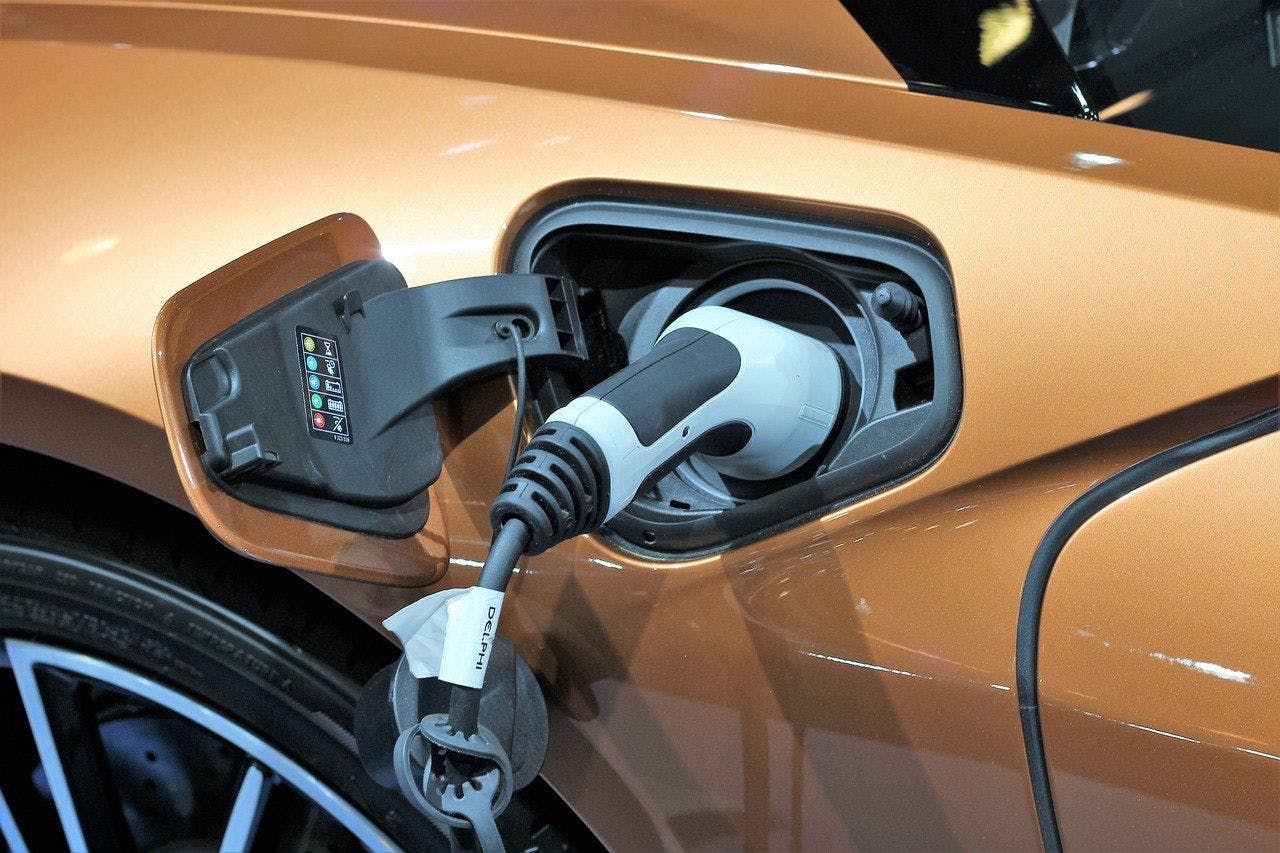Carbone 4’s public response to the GFANZ Consultation on Transition Finance Strategies and Measuring the Impact on Emissions
Last September, the GFANZ published its proposal to define a normative framework for the decarbonization of the financial sector[1].
The GFANZ proposal identifies 4 decarbonizing actions for financial players:
- Developing and scaling up climate solutions;
- Financing assets or companies already aligned with a 1.5°C trajectory;
- Financing assets or companies committed to reducing their emissions in line with 1.5°C trajectories;
- Investing in very carbon-intensive assets in order to remove them (managed phase out strategy).
It is structured in two parts, the first dealing with the definition of each of these actions, the second with the measurement of the performance of a company/asset with regard to a given type of action.
The purpose of this document is to clarify Carbone 4's position on the GFANZ proposal in order to suggest improvements to its methods and definitions. The document proposed by the GFANZ has laudable intentions and raises interesting questions: the mobilisation of financial flows is indeed essential to achieve global decarbonisation compatible with the 1.5°C objective. The specific focus on decarbonising assets and exiting from carbon assets, highlighted in the GFANZ report, seems to us to be a step in the right direction. However, we do not believe that the methodological options proposed by the GFANZ will make it possible to achieve the desired objective.
Six points in particular caught our attention:
- the problematic concept of Expected Emissions Reductions (EER) which consists of comparing a business as usual scenario with the emissions reduction pathway to which a company is committed;
- the potential misuse of the concept of avoided emissions, especially when used for other purposes than estimating emissions reductions of solution providers and enablers;
- the insufficient guarantees associated with the effective implementation of decarbonization commitments;
- the absence of criteria to guarantee the financial additionality of investments;
- the unsatisfactory distinction between solution providers and enablers, presented as a response to possible double counting of avoided emissions, but difficult to make in practice.
- the exclusive focus on decarbonization, which does not tackle the fundamental question of the end purpose of products sold by companies and their compatibility with reasonable societal needs in a net zero economy
We believe that the notion of Expected Emission Reductions (EER) is both unnecessary and potentially risky.
The method envisaged by the GFANZ to quantify the environmental value of a project is largely based on the notion of Expected Emission Reductions (EER), rewarding financial institutions for the expected volume of emissions that would be avoided thanks to their investments and the actions taken by their customers. Estimating EERs, as described in the document for aligned and aligning companies, involves comparing a business-as-usual emissions pathway with the emissions pathway resulting from the commitments made by the companies. Carbone 4, like other players who have already communicated their position[2], believes that the method proposed by the GFANZ must be revised, or even abandoned, in order to be aligned with the overarching objective of decarbonizing the financial sector.
Indeed, the EER concept, when comparing actual emissions to a company-level BAU (method used for aligned and aligning companies) is potentially risky in the sense that:
- It requires comparison with a business-as-usual pathway at company level, which can only be declarative and is inherently unverifiable. This business-as-usual trajectory can even describe an increase in emissions (and not just a constant level). It is theoretically possible for a company to exaggerate the business as usual emissions in order to maximize its EER in an abusive manner, without this being detectable by an external third party.
- The method therefore provides a structural incentive to favor the most carbon-intensive players, who are on paper (but on paper only), and from a strict accounting point of view also those with the greatest potential for decarbonization. The GFANZ acknowledges this risk, admitting “the EER should be revised downward accordingly” (p. 32), but these revisions have little or no impact, as the funds invested have already been provided at the time when the drift is noted ex-post.
- It leads to confusion between “actual emissions compared to a company-level BAU” and “emissions avoided by products and services”. While the latter type of avoided emissions is useful, since they help quantify the extent to which a solution contributes to the decarbonization of society (which is not captured by classic corporate carbon footprint assessments), the former is redundant with the notion of corporate carbon footprint.
These risks are all the more unfounded in that the use of EERs seems unnecessary, given that it overlaps with the carbon footprint indicator (induced emissions). Measuring the gap between a company's emissions and its decarbonization pathway already gives good information about its alignment. Comparing a company's emissions against a hypothetical BAU would provide no additional information to that provided by a forward-looking emissions reduction pathway. Comparing actual decarbonization with a reference pathway aligned to 1.5°C, which is recognised and less open to discussion than a business as usual pathway constructed ad hoc, seems to offer a better guarantee, while avoiding directing investment towards the most carbon-intensive companies. This option also has the advantage of being easier to coordinate with existing frameworks (the SBTi in particular).
Although this proposal may appear attractive at first glance, the devil is often in the details: without offering sufficient guarantees, the new concept of EER could offer an escape route for companies least aligned with the decarbonization imperative.

The use of avoided emissions could be useful, provided that they relate only to products and services sold, and are backed by a robust estimation framework.
Our reservations about the use of EERs do not mean, however, that estimating avoided emissions is pointless.
The comparison with a counterfactual baseline does make sense for products and services (or put another way, when we compare the emissions generated with and without the development of a product/service, which is a different approach from that of comparing a company's actual emissions pathway with that adopted in a business as usual scenario), since it enables companies to measure a positive impact on society that cannot be measured by calculating their carbon footprint. In this respect, we believe, as suggested in the GFANZ paper, that the use of this indicator is useful for actions aimed at promoting companies that provide low-carbon solutions (strategy 1), and for the managed phaseout of high-emitting physical assets (strategy 4). Nevertheless, the concept of avoided emissions, as developed in the GFANZ paper for these two strategies, seems to suffer from an ambiguity in that it suggests that the baseline could be chosen arbitrarily among alternative solutions. Yet, a proper baseline must rather reflect the most likely counterfactual situation, i.e. “what would have happened” without the solution.
For example, if we follow this line of reasoning, even the installation of a gas-fired power plant could generate avoided emissions, if a coal-fired power plant had been chosen as the baseline scenario. In this case, the assessment of avoided emissions should instead focus on constructing a counterfactual scenario representing what would have happened without the deployment of the low-carbon solution (in our example, by considering the mix of power stations built recently, for example). The mere comparison between arbitrary products also conceals the possibility of a rebound effect.
To avoid any fanciful estimates, the reference scenario must be based on a clear framework, such as the Avoided emissions Guidance jointly developed by Carbone 4 and the WBCSD[3].
The guarantees associated with the effective implementation of the decarbonization plan must be strengthened
In order to underpin the credibility of the emissions reduction pathways to which companies commit, the GFANZ asks players to document their decarbonization actions, or to justify the relevance of their projects. We feel that this requirement is essential, but that project/company governance is not addressed as one of the key criteria in the action plan, even though it is a decisive factor in the success of projects.
Additionality of funding is insufficiently guaranteed
The methodological developments proposed in the document aim to guarantee the existence of environmental additionality. They seek to answer the following question: if I invest in this project/this asset/this company, does my financing make it possible to reduce emissions, and if so, by how much? (it is additional from an environmental point of view, in the sense that it is of interest compared to the situation in which the project is not developed). However, they offer no guarantee of financial additionality, which seeks to determine whether this investment in the company(and the conditions required for this investment) has actually triggered additional action on the part of the company. Financial additionality does not focus on the environmental benefit of the project, but on the benefit of the financing: this time it asks whether the decarbonisation actions implemented were made possible by the financing in question, or whether they would have been implemented anyway.
GFANZ assumes that a financial player can be considered "net zero aligned" thanks to its investments. However, financial players do not have the simple task of allocating capital to virtuous players; they must also play an active role in the transformation of companies, using these investments as levers to influence their strategic choices (for example via resolutions at general meetings, by making the amounts invested, the liquidity and the price of their interventions conditional on the achievement of environmental criteria, etc.). It is not obvious that investing in a company necessarily contributes to changing its strategy: if, for example, these securities are bought on the secondary market, this purchase is transparent from the company's point of view. If financial players wish to make a significant contribution to the goal of global carbon neutrality, their approach must be more ambitious than simply allocating capital.
The distinction between Solution providers and Enablers does not always work in practice
One of the key distinctions, supposed to avoid double counting of avoided emissions, is based on the distinction between solution providers and enablers. The GFANZ defines these two concepts as follows:
- solutions are products or activities that "directly contribute to the elimination, removal or reduction" of greenhouse gases,
- enablers are “assets that indirectly contribute to, but are critical for, emission reductions by facilitating the deployment and scaling of solutions” (p. 15).
To support this distinction, GFANZ cites the example of a battery manufacturer who facilitates the deployment of electric vehicles, here assimilated to a decarbonizing solution. While conceptually appealing, this distinction comes up against major practical difficulties in practice: the battery maker is an enabler relative to the car maker, but it is also a solution provider relative to the mining company. It is therefore not clear that the option presented here will avoid double counting.
On this issue, we suggest allocating avoided emissions with the same manner as it can be done for the carbon footprint (ex: allocation with the added value). We also recommend introducing a threshold of a certain share of revenues (e.g. 50% of revenues or CAPEX associated with green activities) to identify “Solution providers”.
The EER concept focuses exclusively on decarbonization, which does not tackle the question of the compatibility of companies’ business models with reasonable societal needs in a net zero economy.
The environmental transition calls for far-reaching changes: some activities will have to grow considerably (products linked to thermal renovation, soft mobility such as cycling), while others will have to disappear: for example, the gradual electrification of the car fleet and the drive to reduce energy consumption will require a complete reorganization of vehicle maintenance and repair activities (with the long-term disappearance of car parts linked to internal combustion engines); similarly, the decarbonization of emissions linked to packaging will no doubt require not only a marginal reduction in the carbon intensity of materials already in use, or the replacement of certain materials with others, but also the consideration of other packaging methods (bulk, deposits, etc.). ). In other words, decarbonizing the economy cannot consist of maintaining current structures and products by incrementally reducing their carbon intensity. The scale of the transformations required means that, when assessing the appropriateness of an investment, we need to consider the purpose of the assets and products being financed.
This question must be asked in two complementary ways:
- Usefulness for decarbonization, i.e. the company’s contribution to reducing global emissions. This aspect is addressed in particular through the concept of avoided emissions by products and services.
- Compatibility with a low-carbon horizon, i.e. the company's capacity to be resilient in a low-carbon world
However, while the notions of EER and avoided emissions, both present in the report, are intended as an answer to the question of utility for decarbonization, the GFANZ proposal neglects the second aspect of the problem raised here: it does not explicitly consider the question of the compatibility of a product or asset with a low-carbon horizon (replacing an oil-fired power plant with a gas-fired plant lowers the carbon intensity associated with energy production, all other things being equal, which does not mean that the decision to build a gas-fired power plant is appropriate in a decarbonized world, particularly if a lower-emission alternative could have been considered instead). Worse still, by encouraging the financing of assets with the greatest decarbonization potential, it risks achieving the opposite of the desired effect on this point, by directing flows towards the least resilient assets (see 1.). Indicators do exist, however, albeit imperfectly, to attempt to approach this question: the Paris Agreement Compatibility Score (PACS) developed by Carbone 4, or other forms of taxonomy, are useful tools in this respect.
Conclusion
A clear framework must be defined to direct financial flows towards low-carbon assets and enable financial sector players to make appropriate decisions in the face of the environmental transition challenge, while avoiding greenwashing. This first GFANZ proposal has the merit of raising major questions, and placing them at the heart of the discussion.
It also underlines the diversity of contribution levers, by distinguishing between several modes of action (financing companies in the process of alignment, decarbonizing solutions, abandoning carbon assets).
However, Carbone 4 believes that, as they stand, the proposals contained in this version of the GFANZ consultation do not make it possible to achieve these objectives. In particular, the concept of Expected Emissions Reductions runs counter to their initial objective of "promoting transparency and accountability of net zero commitments" (p. 7 of the consultation). On this point, Carbone 4 calls for us to stick to measuring the gap between a company's emissions and its decarbonization trajectory, as applied, for example, under SBTi, and which already provides good information on its alignment. Although imperfect, this option seems to us to avoid the main pitfalls noted here concerning EERs.
Carbone 4 calls on the GFANZ to take into account the concerns expressed by various ecosystem players in order to improve its initial proposal.
Contact us
Contact us about any question you have about Carbone 4, or for a request for specific assistance.




































































